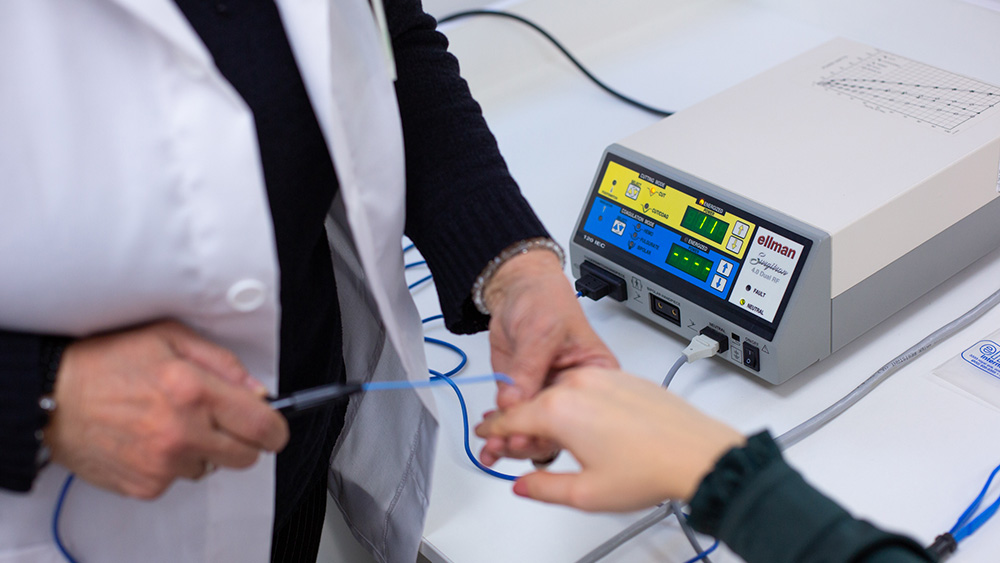Radio frequency surgical knife treatment – electrosurgery

Radiowave surgery is an extremely precise operative technique, with which it is possible to remove all benign changes from the skin. The advantages of this method are that it requires less time than classic surgery, with minimal tissue trauma, which results in shorter recovery time, better wound healing, and imperceptible scars.
Here at the Longa Vita polyclinic, we use a radio wave device manufactured by the Ellman company, the leading manufacturer of such devices. Using high-frequency electromagnetic waves helps us achieve a fine cut, effective hemostasis (stopping bleeding), uncomplicated wound healing, and a completely acceptable aesthetic result.
Performance technique
The patient is placed in a lying or semi-sitting position on the table. A dispersion electrode (a grounding pad) is placed under the patient. The method is very comfortable and extremely fast, and is performed under local anesthesia. It takes 20 to 40 seconds to remove any change from the skin.
Selection of patients
While establishing the medical history, pay special attention to the presence of pacemakers and defibrillators, since high-frequency current can affect their operation or destroy them.
Indications
- Actinic keratoses
- Seborrheic keratoses
- Soft fibroids, pendulous warts
- Pigmented moles (which are not suspicious and do not require pathohistological examination)
- Xanthelasmas (accumulations of fatty substances)
- Sebaceous cysts
- Viral warts
- Mollusca contagiosa (mollusks)
Contraindications
Presence of electro stimulator and heart defibrillator
Suspicious pigment changes, observed dermoscopically, which require radical surgery and pathohistological examination
Can moles be removed for aesthetic reasons?
The answer is YES. Dermoscopically observed pigment changes, during an examination by a dermatology specialist, which are benign, not suspicious and do not require a pathohistological examination, can be removed for aesthetic reasons or because they are exposed to chronic irritation, e.g. clothing or shaving, without any risk to health, and with a maximally good aesthetic effect.
Postoperative care and patient instructions
All wounds are bandaged with sterile gauze, with advice given on regular rinsing with disinfectants and the use of antibiotics for local application, until a complete healing and a control examination by a dermatologist, if necessary.
Don't waste time, be confident and satisfied with your appearance from head to toe!
Schedule a free consultation today!
or call us
